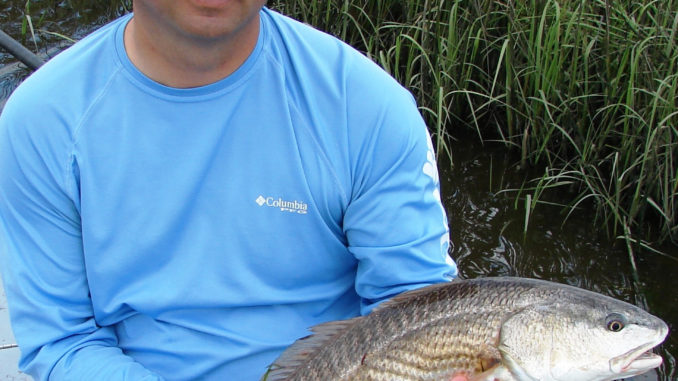
The coastal marshes of southern Brunswick County are the southernmost saltwater areas in North Carolina and are often home to the first hearty bite to fire up when the water starts warming in the spring.
During warm winters, the action might continue all winter, but it surges to another level when the water begins to warm in March. A cold snap might put them off their feed for a few days, but they don’t leave, and when the water warms again, they often fire back off on a serious feed.
Most years, spring begins trying to break winter’s grip by late February, and the water has already warmed at least a few degrees by early March. Drum — both red and black — are typically the first fish to respond to this warming. Some speckled trout may be biting, too, but their numbers were reduced by several cold stun/kill events in January, and all trout caught must be released until the season reopens June 15.
Red drum will be staging in deeper holes in the marsh, in and around creek mouths, or they may be working the shallow flats scattered across the marsh between Shallotte and Little River inlets. Food is the key to finding feeding drum; they will be where they can grub crabs, shrimp and minnows from around oyster rocks that grow freely in the marshes and creeks, plus along the Intracoastal Waterway.
Most area guides agree red drum feed the heaviest when the tide first begins falling but also acknowledge that drum push up into the marsh to feed as the tide rises. Drum are usually hungry and will check out most baits or lures. Some days, they are picky, but even then they’ll hit a few lures and cut baits. They also don’t appear as wary as at other times of the year.
Guide Mark Stacy of Ocean Isle Fishing Charters (www.oceanislefishingcharters.com) offered a couple of tips. He said fishermen using artificial baits should slow their retrieves. Fish are beginning to feed regularly, but they aren’t aggressive yet. Some days, smaller lures are the key to getting bites. On certain days, using scented lures or adding scent to your lures, will convince a few more fish to bite.
Stacy said pieces of natural bait work well as the water warms. Pieces of menhaden, mullet and shrimp might be the final piece of the puzzle to convince fish to bite.





Be the first to comment